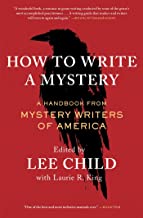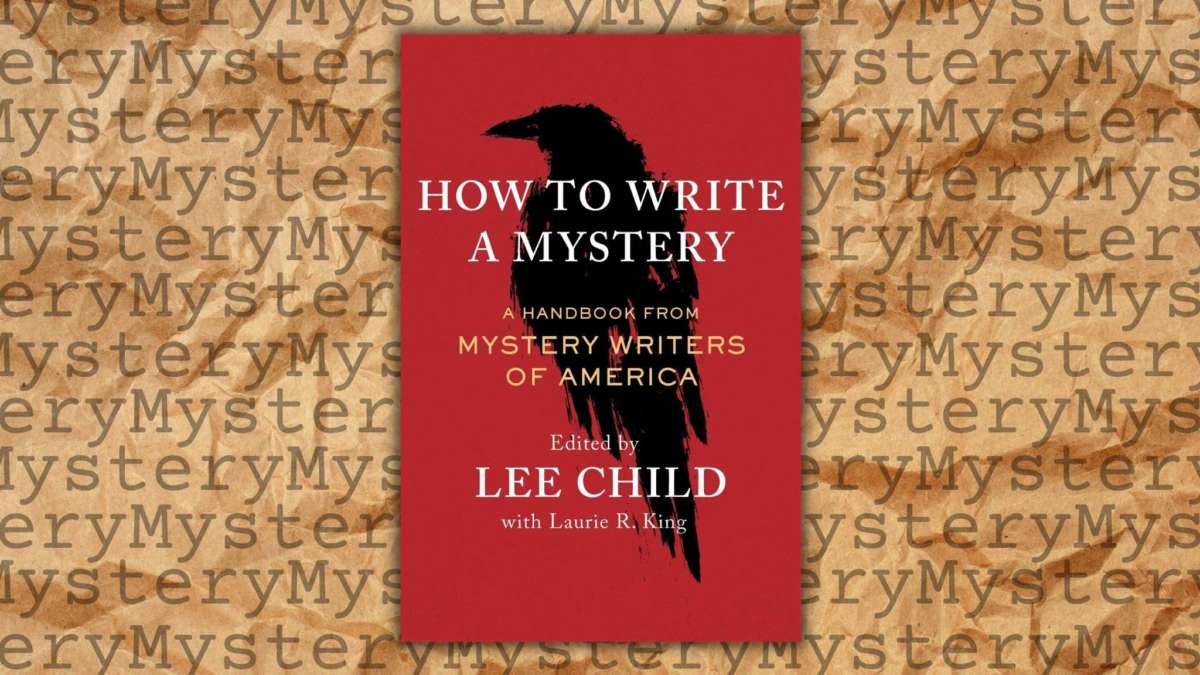How to Write a Mystery by Jeffrey Deaver, Lee Child, Charlaine Harris, Kelley Armstrong, Tess Gerritsen, Meg Gardiner, Laurie R. King
Given that I’ve written around, oh, 50 of them, I kind of know my way around the world of mysteries and thrillers. Enough, anyway, to say that How to Write a Mystery (Scribner), a handbook on the craft put out by the Mystery Writers of America is one of the best and most inclusive manuals ever.
There are no less than thirty-four chapters contained under four separate headings jampacked with some of the biggest, most experienced and most respected names in the business. Whatever your chosen mystery-thriller sub-genre is, you’ll find it covered here, along with more general coverage that runs the gamut from dialogue to structure to characterization to research to preparation — the list goes on and on.
And, talk about something for everyone; Jeffrey Deaver pens a chapter called “Always Outline!” immediately followed by a chapter from Lee Child entitled “Never Outline!” In writing, one size seldom fits all, and the editors behind How to Write a Mystery were wise enough to proceed with that in mind. As Child himself tells us in his introduction, “Every successful mystery novel must have two specific attributes. Unfortunately, no one knows what they are.”
SEASONED MYSTERY AUTHORS HAVE ALL THE ANSWERS
The joke’s on us if, in searching for answers, we ask the wrong questions. The good thing is just about all of those questions, as well as the answers, are included here. Legendary editor Neil Nyren gives us “The Rules—and When to Break Them.” Charlaine Harris writes eloquently on combining genres. Kelley Armstrong offers advice on writing mysteries for young adults, and Tess Gerritsen sets forth the components of the medical thriller.
In other words, there’s something for everyone here and all of it is firmly on point.
As Meg Gardiner writes in her chapter, “You’re eager to create a gripping story in which the protagonist tries to stop something dreadful from happening. You want to cause delicious anxiety and apprehension that keeps readers on the edge of their seats, turning the pages in dread and exhilaration. How do you create work that lives up to the name and thrills?”
Laurie R. King’s chapter, devoted to “The Art of Rewriting,” concludes with, “The rewrite is how we turn a book from a story that speaks to its author into a story that touches the world.”
AN ACCESSIBLE MANUAL FOR EVERY MYSTERY-THRILLER WRITER
There are a ton of insightful challenges like that contained in How to Write a Mystery, each one followed or preceded by a specific regimen for how to meet them. The best writing manuals need to do a lot of things well to be effective, and the best word that comes to mind here is accessibility. Every mystery-thriller writer will find at least something they can use and plenty will find a lot.
How to Write a Mystery is a splendid technical treatise for writers of any stage or level. It’s the fiction writing equivalent to screenwriter Blake Snyder’s brilliant Save the Cat and Save the Cat Goes to the Movies. Reading the book feels like taking a graduate-level course, but for only twenty-seven dollars. All told, an immensely worthwhile investment for the storyteller in us all.
Also check out the “Writer’s, Ink” interview with Lee Child about this book here.
RELATED POSTS
Jon Land’s Must-Read April Thrillers
Jeffery Deaver on Survivalists, Cults and His New Thriller “The Goodbye Man”
When the Ghost that Haunts Your House is Handsome… and Deadly





